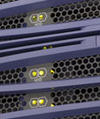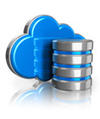Hardware suitable for cloud environments
Key to Success
Cloud environments are complex, costly installations with countless individual components. Because they should scale seamlessly across the board, their planning is already far more complex than that of conventional setups. Various basic design parameters are set by the platform's administrator before even a single machine is installed in the rack.
If you are planning a large, scalable platform, you need to do it in a way that leaves as many options open for later as possible. These tasks involve varying complexity at the various levels of a setup. Compute nodes, for example, easily need to be more powerful than current generation systems in a few years' time. If necessary, existing systems are replaced by new ones as soon as the older ones are no longer maintainable.
Critical infrastructure is more difficult. If the network switches are on their last legs, all the power in the world from the compute nodes is not going to help. If the network has not been sensibly planned, its hardware cannot be replaced or scaled easily. Mistakes in the design of a platform are therefore a cardinal sin, because they can only be corrected later with considerable effort or, in the worst case, not at all.
In this article, I look at the aspects you need to consider when planning the physical side of a cloud environment at four levels: network, storage, controller, and compute.
Network: Open Protocols and Linux
The first aspect to consider is the network, because this is where all the threads literally come together. If you come from a conventional IT background and are planning a setup for the first time, you will probably be used to having an independent team take care of the network. Usually, this team will not grant other admins a say in the matter of the hardware to be procured. The vendors are then generally Cisco or Juniper, which ties you to a central network supplier. In large
...Buy this article as PDF
(incl. VAT)
Buy ADMIN Magazine
Subscribe to our ADMIN Newsletters
Subscribe to our Linux Newsletters
Find Linux and Open Source Jobs
Most Popular
Support Our Work
ADMIN content is made possible with support from readers like you. Please consider contributing when you've found an article to be beneficial.







